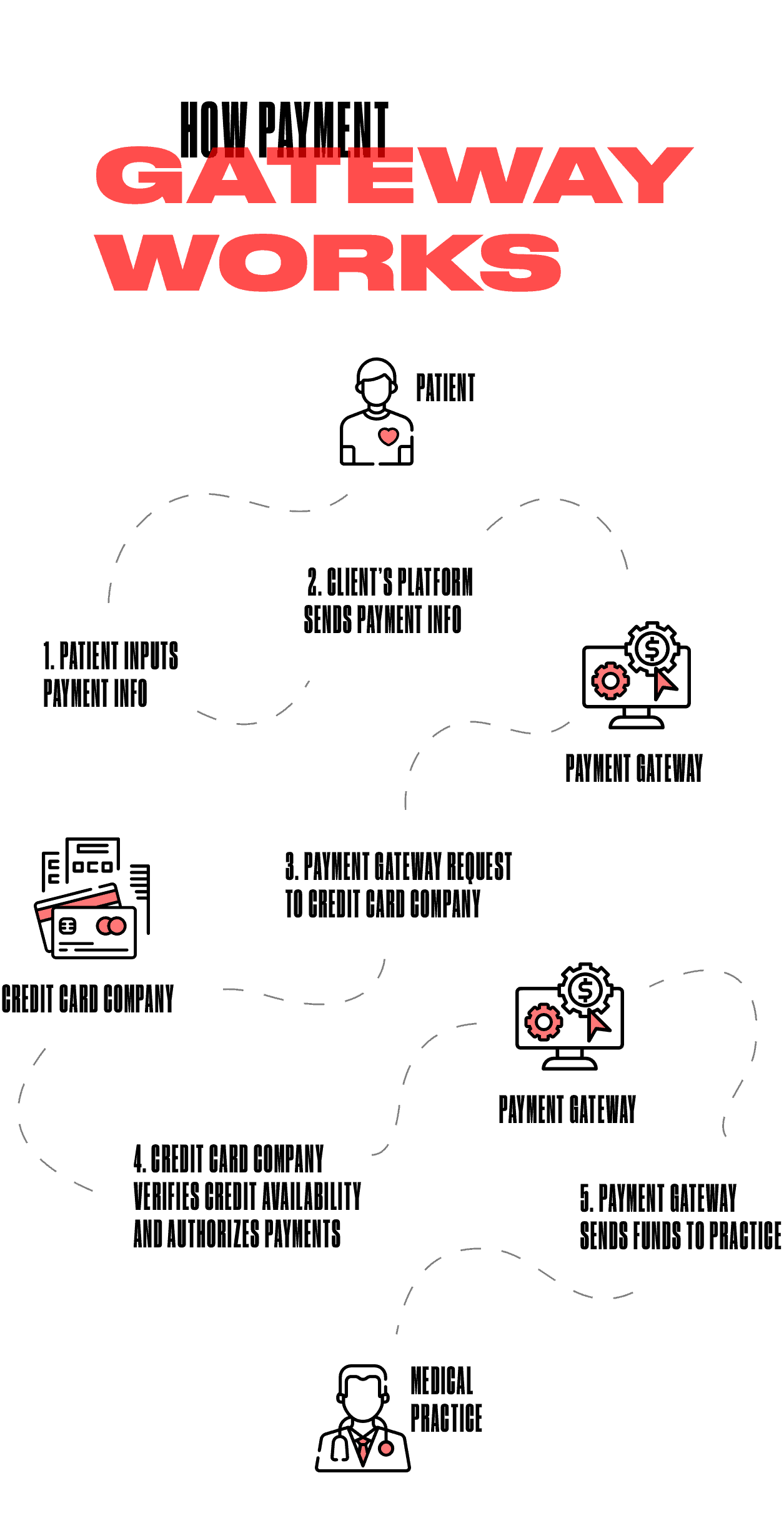HEALTHCARE PROJECT
PROJECT SUMMARY

CHALLENGE
Choose the appropriate payment gateway and integrate it into the existing platform
PRODUCT
Software for private medical practices and institutions
DELIVERABLES
We’ve analyzed payment gateways, evaluated them against business needs, and integrated the most appropriate into the platformINTRO
As a startup CEO, it’s crucial for you to use solutions that help increase revenue and improve customer experience. Choosing the right payment gateway and seamlessly integrating it into your product is no exception.
When it comes to payment processing software, there’s no one-size-fits-all solution. Every industry and product has its peculiarities and requirements that influence the entire business process flow. The payment service provider should ensure impeccable user experience, security and match your unique business goals. Above all, the choice of payment service provider requires deep research, analysis, smooth integration, and development.
Continue reading this case study, to learn how we helped our client, a healthcare platform, to choose and integrate a cost-effective payment gateway in the shortest term.
OVERVIEW
The client provides software solutions to private medical practices and institutions to keep the patient’s records and facilitate communication between patients and healthcare professionals.
After the free version of the platform was released, the client managed to test the product idea by collecting real-world feedback as well as bring in more customers and increase the customer base.

The next step was to add a subscription plan, which included “book an appointment with a doctor online” and a “queue management system”, that allows patients to easily join and check the queue status online.
To improve customer experience and reduce wait times, our client wanted to encourage patients to fill out forms and pay before coming to the office, using a payment gateway integration.
With the integration, it’s easy to build custom forms and take payments. So when the patient arrives at the hospital, they have a completed form and paid doctor’s appointment.
CHALLENGE
Our client saw an opportunity to increase its revenue by adding a subscription payment model to its platform. Before moving ahead with adding a subscription payment model, our client launched a free model.

This allowed him to collect user feedback and test the concept of an app on the market to shape it further into the paid version.
Adding subscriptions meant changes to product pricing, support, and billing. The integration of a payment gateway would be required to support these business model changes. The client engaged us to put in place a subscription billing system and integrate an online payment system.
SOLUTION
First of all, we conducted research and comparative analysis of the most popular online payment gateways. From the existing ones, we chose Splash Payments, Stripe, and PayPal. We evaluated the individual features of each system. Our choice was mostly based on the needs and requirements of the client’s platform. We’ve found Stripe to be one of the easiest to integrate and maintain, due to its powerful and flexible API. It also gives developers full control of the entire payment experience. In addition, it was important for us to find the most cost-effective and convenient service. If you compare Stripe to PayPal, it has lower service fees.
Moving forward, we developed the internal software architecture of the subscription billing system and used Stripe as a payment gateway.

The integration of a subscription billing system allows us to:
- See when the payment was made.
- Give our users an easy way to sign-up for (and cancel) subscriptions to our API product.
- Keep track of who is subscribed and check whether subscriptions are active.
- Automatically withdraw money from accounts and send monthly invoices.
- Receive detailed reports and statistics regarding payments and transactions.
Above all, Stripe values data portability. So in case of Stripe has an outage, changes in its terms of use, or the client decides to choose another payment gateway, our developers can migrate all the data in a secure and PCI-compliant way. It’s good to have a choice and not be attached to a single system forever. Therefore naturally we integrated into the software architecture the possibility of changing the payment gateway if necessary.
A good question to ask is “where does the data live?” As Stripe’s system is secure and well-designed, we decided to use Stripe as a source to keep all customer and billing data. All we need to keep track of in our system is a Stripe customer ID for each of the user accounts and information about transactions.
All in all, we managed to conduct analysis, make all preparations and integrate Stripe into the client’s platform within 15 business days. The integration was performed by the PHP developer, while the rest of the digital product development team focused on developing premium features.
VALUE DELIVERED
Let's create something
awesomeOUR RECENT PROJECTS
 REDUCE REGRESSION TIME
REDUCE REGRESSION TIME
- social platform
- test suite optimization
- automated regression testing
- test-driven development (TDD)
 REAL-TIME DATA SYNCHRONIZATION
REAL-TIME DATA SYNCHRONIZATION
- productivity app
- debugging
- data synchronization
- offline-first approach
